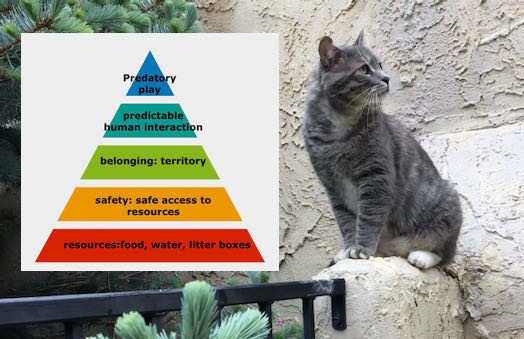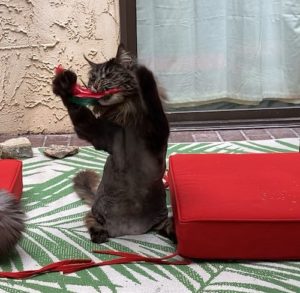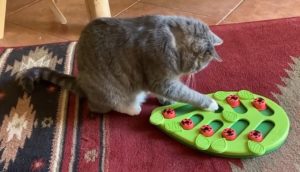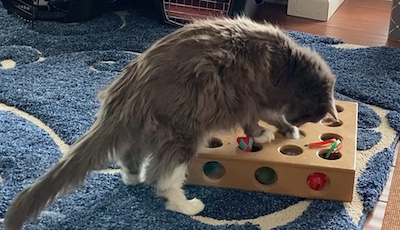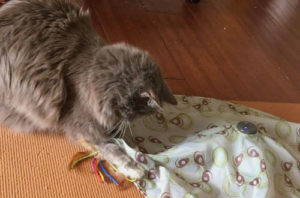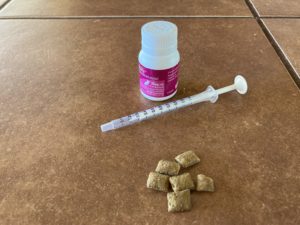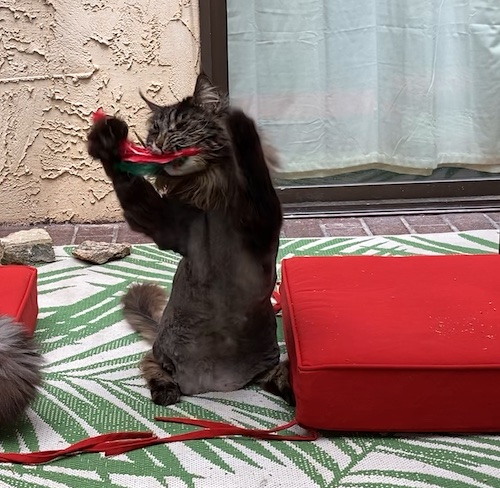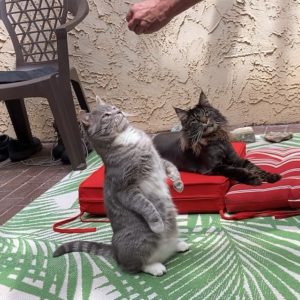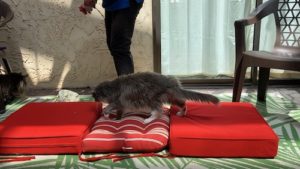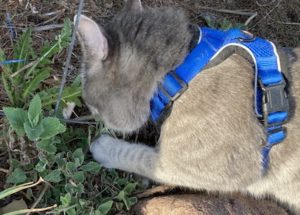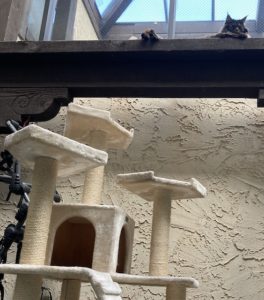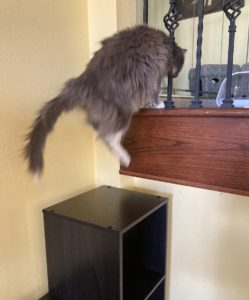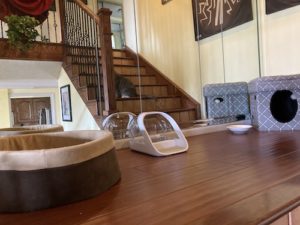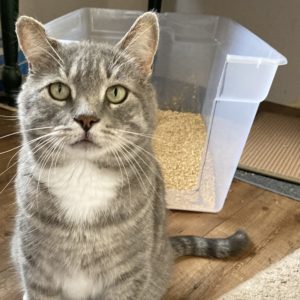 A common complaint of cat owners is that their cat does not always use the litter box. This can be a nuisance – cat urine can have a strong odor particularly if the cat is not neutered or spayed. Soft stools can be a challenge to clean up. I am always surprised at how many people accept the “out of the box” incidents and use potty pads or towels to manage the mess. What can you do if this happens to you?
A common complaint of cat owners is that their cat does not always use the litter box. This can be a nuisance – cat urine can have a strong odor particularly if the cat is not neutered or spayed. Soft stools can be a challenge to clean up. I am always surprised at how many people accept the “out of the box” incidents and use potty pads or towels to manage the mess. What can you do if this happens to you?
Why your cat thinks outside the box
There are a number of reasons cats may think “outside the box” and don’t use their litter boxes. Sometimes, it is a marking behavior. Other times, the litter box does not meet feline requirements, the cat is sick, or another cat is “guarding” the box. These are just a few of the reasons that may lie behind feline house-soiling.
Marking
Cats use urine to mark territory, advertise for a mate or let other cats know that Mr. Fluffy has been here (feces may also mark terrritory but urine is more common in domestic cats). The urine mark not only gives information as to the sexual status and general health of the marker, it also has a “time stamp” indicating when the mark was made. Cats, being solitary hunters, avoid confrontations to reduce the risk of injury. This “time stamp” may help cats avoid encountering each other.
Such urine marking is often but not always sprayed on vertical surfaces. It is typically characterized by small amounts of urine. This is usually a behavior of intact males and sometimes females but can occur with neutered or spayed animals. (Journal of Feline Medicine & Surgery 16(7):545, 10.1177/1098612X14539085)
PROBLEMS WITH THE BOX
- Box is too small
- Box is in a busy location near noisy appliances or in a high traffic area
- Box is located near a window where neighborhood cats come
- Box is not clean – remember to scoop at least once a day
A research team at Nestlé Purina found that cats prefer to use unused litter boxes. However, this preference for unused boxes did not seem to be due to odors. Cats did not seem to care whether or not the litter box smelled of urine or feces. But cats did not want to use litter boxes with actual urine clumps and feces nor did they want to use litter boxes with simulated urine clumps made from salt solution or “faux feces” made of gelatin. Ultimately, it appears that it is important to scoop frequently, removing physical obstructions from the litter box.
“Does previous use affect litter box appeal in multi-cat households?”
https://doi.org/10.1016/j.beproc.2017.02.008
MEDICAL PROBLEMS
Pain and discomfort when eliminating can result in a cat associating the litter box with pain. Ongoing pain can be frightening for a cat and cause him to be anxious, exacerbating urinary and gastro-intestinal problems. The cat may choose not to the use the litter box he associates with the painful elimination.
When your cat thinks outside the box, it could be due to medical issues, including:
- Urinary tract infections
- Bladder stones
- Arthritis – can make it difficult for a cat to squat or step over a high side to get into the litter box
- Constipation and diarrhea
- Cognitive dysfunction in older cats ( Cat Dementia: How Can We Manage It?)
- FIC (feline idiopathic cystitis) – (see “Is My Cat Sick from Stress”)
- Hyperthyroidism
- Diabetes
- Kidney disease
Social problems
- The litter box is being “guarded” by another cat
- The family dog is coprophagic and “haunts” the litter box
- A toddler wants to “play in the sandbox” too
- A house guest kicks his shoes off and they hit the wall; the noise startles the cat in the box
When your cat thinks outside the box – make an appointment with your veterinarian. Your vet can:
- Assess your cat’s overall health
- Collect blood, urine and stool samples for diagnostic screening
- Take X-rays if there are concerns about bladder stones or arthritis
- Prescribe pain medication
- Prescribe anti-anxiety medication while house-soiling issues are being resolved
It is wise to act promptly when house-soiling issues arise. When house-soiling continues for a long time without resolution, we run the risk of “coping behaviors” becoming habits. For example, a cat may choose to urinate in the shower or bathtub, defecate in a quiet corner in the front entryway, or eliminate right next to the box. Once these behaviors are established, it is sometimes difficult to break these “bad” habits.
Our next post will look at what you, the cat guardian, can do to encourage new habits and help remedy house-soiling, when your cat thinks outside the box.

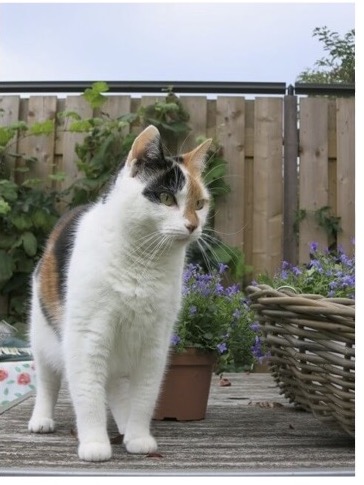
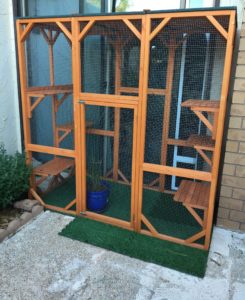
 cat on a morning or afternoon walk in your backyard or neighborhood. After all, getting outdoors is good for us too! It never hurts to have your cat harnessed even in a fenced backyard – this way you can clip the leash on as needed. If you walk your cat in public places, make sure to have kitty in a harness with leash and have a mobile “outdoor safe place” – stroller or backpack – with you.
cat on a morning or afternoon walk in your backyard or neighborhood. After all, getting outdoors is good for us too! It never hurts to have your cat harnessed even in a fenced backyard – this way you can clip the leash on as needed. If you walk your cat in public places, make sure to have kitty in a harness with leash and have a mobile “outdoor safe place” – stroller or backpack – with you.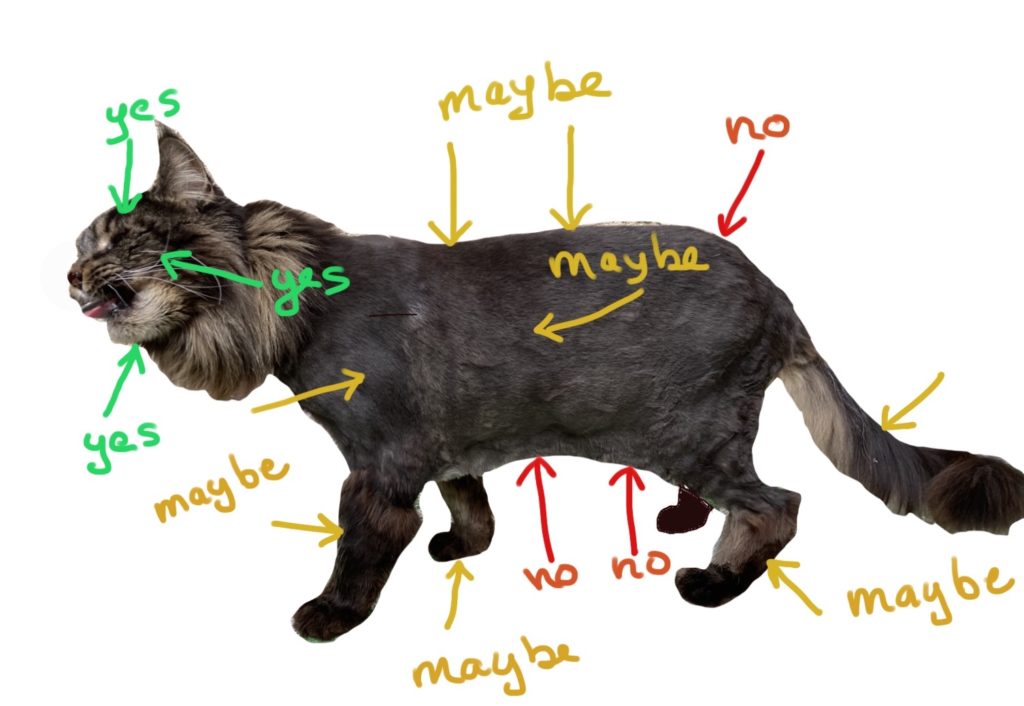


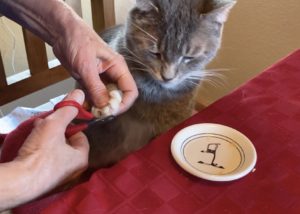

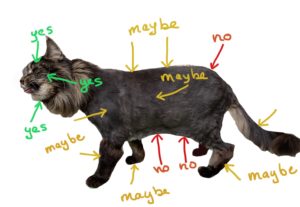 Follow the CAT guidelines when interacting with cats for a safer, more enjoyable encounter!
Follow the CAT guidelines when interacting with cats for a safer, more enjoyable encounter!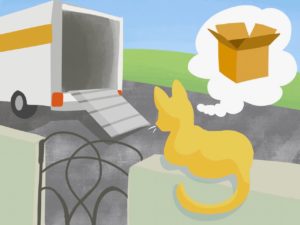
 It is not surprising that cats in taped squares became the subject of a research study investigating
It is not surprising that cats in taped squares became the subject of a research study investigating 